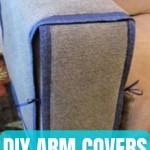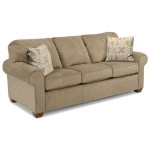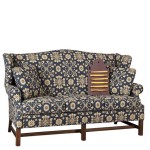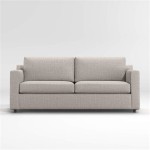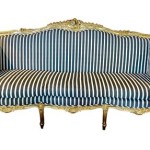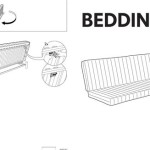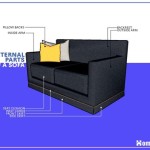Modular Sofa Sizes: A Comprehensive Guide
Modular sofas offer unparalleled flexibility in design and configuration, making them a popular choice for modern living spaces. Understanding the various sizes and dimensions of modular components is crucial for creating a sofa that seamlessly integrates into a room and caters to specific needs.
The beauty of modular sofas lies in their customizable nature. Unlike traditional sofas that come in fixed sizes, modular systems are comprised of individual units or modules that can be combined in countless arrangements. This allows for the creation of anything from a compact loveseat to an expansive sectional sofa, catering to diverse room sizes and seating requirements.
While the exact dimensions vary between manufacturers and specific models, some standard measurements can help consumers navigate the world of modular sofas. One of the most common modules is the single-seat unit, often referred to as an armless chair or middle module. These typically range from 30 to 40 inches in width.
Corner units, essential for creating L-shaped or U-shaped configurations, also adhere to a general size range. Most corner modules measure between 35 and 45 inches on each side, forming the 90-degree angle. It's important to note that these dimensions are external measurements, and the actual seating space will be slightly smaller due to upholstery and frame construction.
Another critical component in modular systems is the chaise lounge extension. This provides a comfortable space for stretching out and relaxing. Chaise lounges typically measure between 60 and 80 inches in length and are often the same width as the single-seat modules. The depth of the chaise can also vary, with some models offering deeper seating for enhanced comfort.
Ottomans are a versatile addition to any modular sofa configuration. They can serve as a footrest, extra seating, or even a coffee table when paired with a tray. Ottoman sizes vary considerably, ranging from compact square ottomans measuring around 24 inches per side to larger rectangular ottomans that can exceed 40 inches in length.
Beyond the individual module sizes, understanding the overall dimensions of the desired sofa configuration is paramount. Before purchasing a modular sofa, careful measurement of the designated space within the room is essential. This ensures that the chosen configuration will fit comfortably without overwhelming the area or obstructing walkways.
Manufacturers often provide detailed diagrams and dimensions for each module, as well as examples of various configurations. These resources are invaluable in visualizing the final arrangement and ensuring it aligns with the available space and desired seating capacity.
Consider the intended use of the sofa when selecting module sizes. For smaller apartments or rooms intended for casual conversation, compact modules and a smaller overall configuration might be more suitable. In larger living spaces designed for entertaining, a more expansive sectional with a chaise lounge and additional seating modules might be preferred.
The height of the modular sofa is another factor to consider. While most sofas have a standard seat height ranging from 17 to 19 inches, variations can exist. It's important to ensure the height complements existing furniture and provides comfortable seating for individuals of varying heights.
Depth is also a critical dimension, particularly when considering comfort and lounging preferences. Deep-seated sofas offer a more relaxed and casual seating experience, while shallower depths are more suitable for formal settings and individuals who prefer a more upright posture.
Beyond size considerations, the style and design of the modular sofa should harmonize with the overall aesthetic of the room. Various upholstery options, leg styles, and armrest designs are available, allowing for customization to match individual preferences and existing décor.
The versatility of modular sofas allows for future modifications and expansions as needs change. Additional modules can be purchased and integrated into the existing configuration, providing flexibility to adapt to evolving lifestyles and living spaces.
Careful consideration of modular sofa sizes, combined with an understanding of personal needs and spatial constraints, will result in a functional and stylish addition to any home. By utilizing the available resources and visualizing the final arrangement, individuals can create a customized seating solution that perfectly complements their living space.
Visiting furniture showrooms and experiencing the comfort and scale of various modular sofa configurations firsthand can be invaluable. This allows individuals to assess the quality of construction, test the seating comfort, and visualize the sofa within a realistic setting.
Online resources, including manufacturer websites and furniture retailer platforms, offer a wealth of information on modular sofa sizes and configurations. Utilizing these resources can significantly aid in the decision-making process and ensure a successful purchase.

Roland Modular Sofa Few And Far

Arya Modular Sofa With Open End Rove Concepts Mid Century Furniture

4 Seater Sofa Set 82 6 Square Arm Modular Gkw Retail

Aimee Chesterfield Modular Sofa Living Room Furniture Singapore Sg Bedandbasics

Sofa Dimensions A Comprehensive Guide To Diffe Couch Sizes

Upholstered Modular Sofa Gervasoni Samet

Four Seasons Jordan L Shaped Slipcover Modular Sectional Sofa Jennifer Furniture

Maykoosh Modular Reversible U Shaped Sectional Sofa With Double Chaise And Ottomans Modern Linen Couch Storage Seats Gray 81760mk The Home Depot

Baxter 6s Modular Corner Sofa Banana Home

Excelsa Modular Sofa Caffe Latte Home

